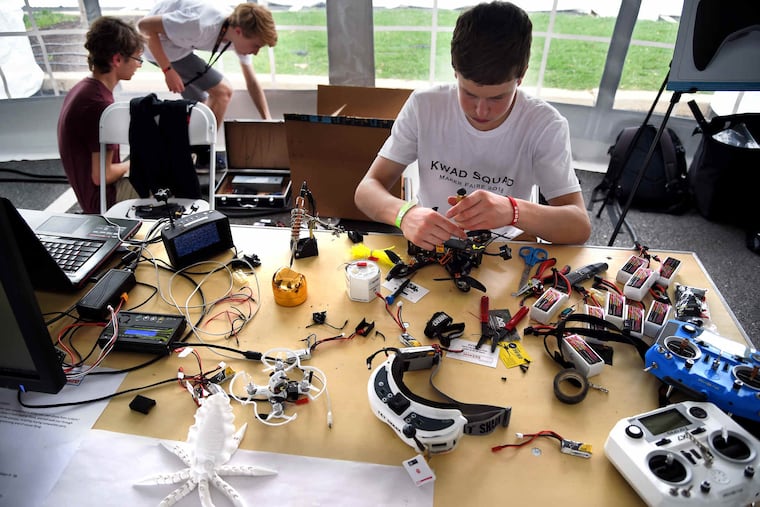States like Pa. need better policy to encourage drone innovation | Opinion
A Trump administration priority, new, liberalized drone rules will likely come out later this year.

Five years ago in a 60 Minutes interview, Amazon founder and CEO Jeff Bezos predicted that drones would deliver goods to American homes by 2019. As far off as that day still seems, we may not be waiting much longer.
Currently, U.S. drones must be within eyesight of a “pilot” on the ground, but a new Federal Aviation Administration proposal would allow remotely operated flights. A Trump administration priority, new, liberalized drone rules will likely come out later this year. This, in turn, could spur an influx of drones delivering food, medical supplies, or other goods — and eventually “air taxi” drones carrying people — over cities.
In fact, the U.S. government, governments abroad, and aerospace and tech companies are making very real preparations for a transportation revolution in the air, complete with a potentially enormous economic boost — and new challenges for states and localities. Some states are more ready than others, thanks to airplane laws passed decades ago.
Emerging aerial technologies are already starting to play a much larger role in our daily lives. More than a million Americans own personal drones these days. Some are used for commercial operation, such as filming, inspecting rooftop property damage, or checking cellphone towers. A company in Iceland is making food deliveries via drone, while UberEats plans to integrate the use of food delivery drones by 2021.
Firms like Transcend Air, Boeing, and Airbus are building drone-based air taxis for short flights that can take passengers from city centers to major airports in minutes. London and Miami developers are already on luxury high-rises in anticipation of air taxi and drone services.
But first, we need to adapt. One problem for drone operators is the threat of trespass lawsuits.
In December, a citizen of Jefferson County, Washington state, sued a neighbor for flying a drone 350 feet above his property. Seeking to stop the flights, he claims his neighbor has committed “aerial trespass.”
Technologists and federal aviation regulators will be watching this case and others like it closely. If drone operators can be sued for trespass every time they fly over private property in certain states, the threat of litigation and legal costs could easily dissuade drone and air taxi companies from getting off the ground.
Some state lawmakers who wish to encourage innovation while still protecting landowners have a solution handy. Currently, 23 states have what’s called a “navigational easement” law. These laws were passed beginning in the 1920s to protect early airplane pilots from most trespass lawsuits when they flew overhead. Wisconsin’s version of the law, which is fairly typical, protects aircraft operators from lawsuits “unless at such a low altitude as to intentionally interfere with” the use of the land.
These laws probably don’t need to be changed to cover drones. Drones fly lower than airplanes but are also much quieter and less disruptive. Even in their current form, easement should protect a drone operator from being dragged into court unless a property owner can show some evidence of real disruption or a violation of privacy laws.
States that have navigational easement laws, including New Jersey, California, and Maryland, will likely face fewer legal issues as commercial drones take to the air, making them more appealing for the next wave of innovation. States that don’t have them, such as Pennsylvania, Ohio, and New York, soon might wish they did.
Innovation and technology policy is more important than ever in our states and cities. It’s moving beyond internet-based services and into health-care, transportation, retail, and labor markets, thanks to such tech as autonomous vehicles, telemedicine, and ride sharing. But technological progress is not an immutable fact of nature. Public policy can either inhibit or encourage it — and states need to decide which one they want to do.
Brent Skorup is a senior research fellow and Trace Mitchell is a research assistant with the Mercatus Center at George Mason University.